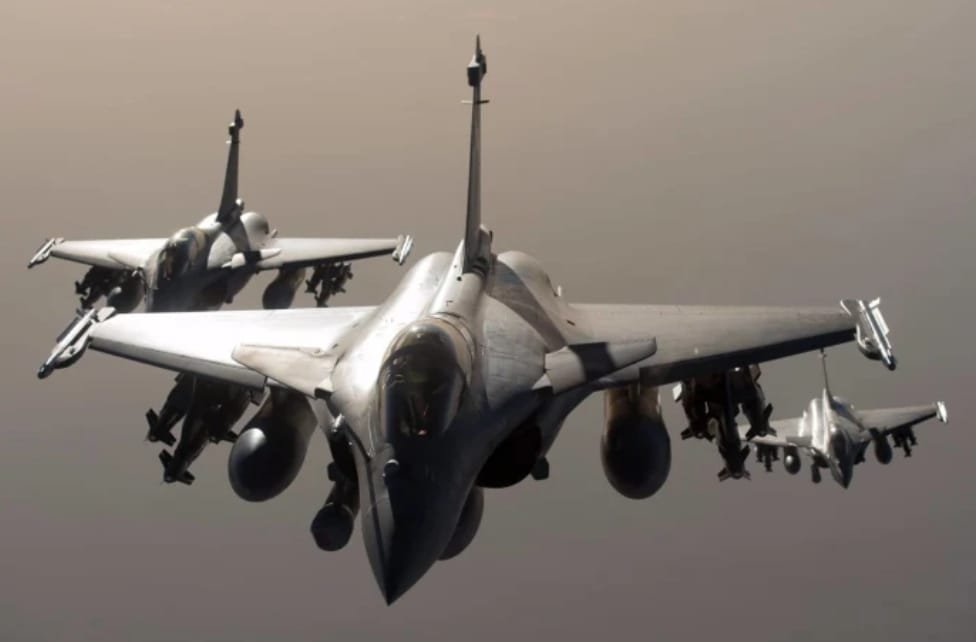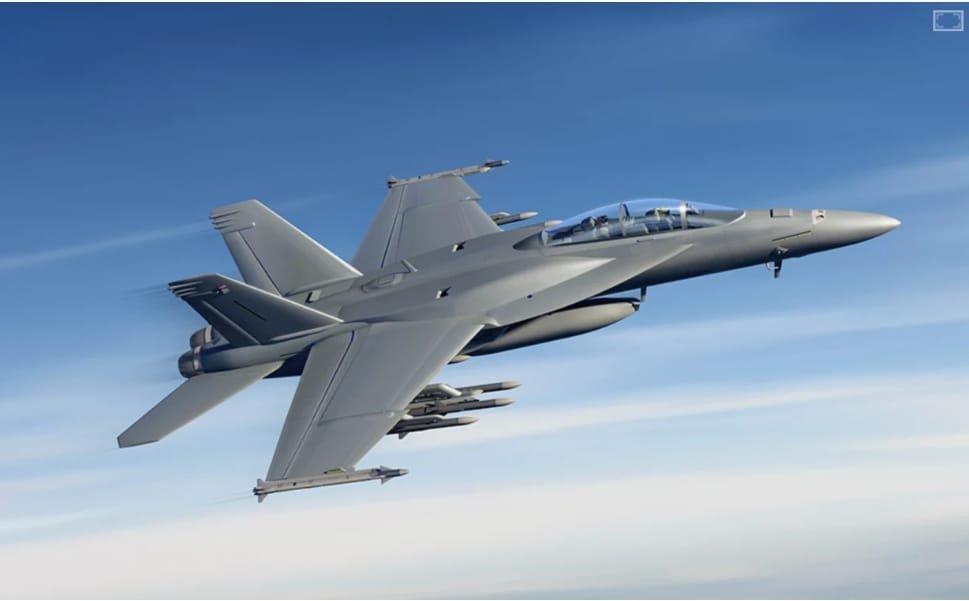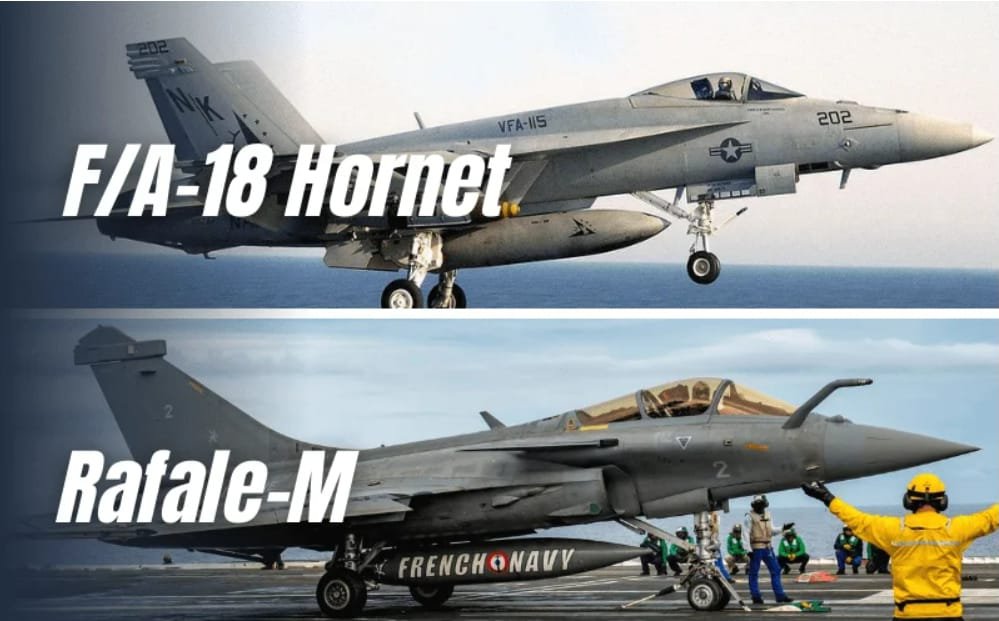When we talk about India’s Naval Jet Procurement, it is a very complex and crucial outline, since it has to meet several requirements and criteria.
In recent times India is planning to buy a new set of naval fighter aircraft that can meet and fulfill India’s requirement to replace the old Russian Mig-29K aircraft. India is planning to buy 26 French Rafale aircraft from the American F-18(F/A-18 Super Hornet) which is a stiff competitor of the French Rafale.
The Rafale and F-18: A Comprehensive Analysis
Technical Specification & Capabilities of Rafale
Rafale is a multi-role and multi-seater, modern 4.5 generation fighter aircraft developed by French Aviation company “Dassault Aviation”. It is designed and developed in order to defend, reconnaissance, and ground attack as retaliation.
Here are the technical specification and capabilities of the French aircraft “Rafale”.

- Weight– It is a very lightweight aircraft of 10,600kg as compared to the F-18 which suits conditions for India’s Naval Forces Point of view.
- Engine– It is a twin-engine fighter aircraft that produces an enormous thrust of 75 Kilonewton per engine (i.e.150 KN of thrust from both engines). Snema M88-2 turbofan engines are used in Rafale.
- It is double-seater fighter aircraft that can be operated by two pilots simultaneously.
- Stealth Feature: Rafale comes with a stealth feature to reduce radar cross-section to increase its survivability.
Capabilities of Rafale Fighter Aircraft
- Maximum speed– It can fly with a speed of 1.8-2 Mach(2500 km per hour).
- Distance– With full fuel capacity it can cover a radius of 1850km.
- Service Ceiling– It can fly up to a height of 15,000 meters.
Avionic and Sensors
- Radar– It is equipped with a modern active Electronic Scanned Array(AESA) Thales RBE2-AA radar which provides long-range detection and the capability to track other flying objects.
- Rafale is also equipped with Infrared search and track (IRST) for target acquisition.
These are the specification and capabilities of Rafale which makes it favorable for “India’s Naval Jet Procurement“.
Now we should also see the specification and capabilities of the F-18 and how Rafale edge out the F-18.
F-18 is a modern warfare fighter aircraft designed and developed by Boeing defense space & security.
- Weight– It is heavier fighter aircraft weighing 14,552 kg.
- Speed– It has the highest speed of 1.8 Mach which is equal to 1,995km per hour.
- Service Ceiling– It can fly up to a height of 15,240m.
- Range– It can fly up to a radius of 2,350 km.

Now Let’s look at how Rafale Edges out F-18
- Stealth Capability– The Rafale is made with a stealth feature that is less detectable than F-18.
- Versatility– Rafale is designed to excel in various mission types and terrains including air-to-air and air-to-ground. It has a large combat radius without refueling than F-18.
- Air-Refueling– Rafale is made with air-refueling capabilities that make it highly endurance during long-range operations.
| Category | Dassault Rafale | F/A-18 Super hornet |
| Manoeuvrability | 9.3/10 | 7.8/10 |
| Speed | 2 Mach | 1.8 Mach |
| Thrust/weight | 1.13 | 1.03 |
| Radar | Thales RBE2-AA | AN/APG-79 |
| Dogfight Rating | 76% | 57% |
| Avionics | 8.4/10 | 9.0/10 |
| Fuel Economy | 0.70 km/l | 0.60 km/l |
| AAM Origin | NATO | USA |
| Unit Cost | 130.000.000 USD | 80.000.000 USD |
Factors Influencing India’s Decision
In India’s Naval Jet Procurement, Both the Rafale and F-18 are multi-role advanced fighter aircraft of modern warfare. But the suitability of Indian Naval Forces may differ and may depend on various factors.
Rafale is known for its superior air capabilities while F-18 has a higher payload capacity. Since India already has an existing fleet of Rafale. So Rafale deal for Indian Navy could be a better option since it can affect maintenance, training, and logistical, support.
The cost of acquisition and maintenance is a critical factor. The Rafale fighter aircraft is in service in Indian Airforce and could benefit from synergies and economies of scale if it is chosen by Naval Forces. The Indian Naval Forces have to evaluate the specific operational requirements such as range, endurance, service ceiling, fuel capacity, payload capacity, etc.
Potential Benefits of Rafale for the Indian Navy
Rafale is basically meant for Indian Armed Forces but it has potential benefits for Indian Navy too. If it is adapted Indian Navy it can offer certain benefits to the Indian Navy. Here are the Benefits that Rafale can provide-
- Carrier-based operations– If Rafale is modified in accordance with the Indian Navy then it can enhance the Indian Navy’s strike capabilities. With the increase in payload capacity and avionics, it can be made a game changer for the Indian Navy.
- Intelligence, Surveillance, and Reconnaissance (ISR)– Rafale’s avionics and advanced sensors and radar helps it to gather important information including detecting and tracking maritime objects, underwater Submarines provide real-time surveillance and reconnaissance capabilities.
- Interoperability– Rafale’s capability of compatibility with other Indian defense systems such as airborne early warning and control systems (AEW&C), naval vessels, and land-based assets can help in Interoperability and enhance coordination and retaliation.
Cost consideration and offset obligation
When comparing the cost consideration of the two in India’s Naval Jet Procurement– Rafale and F-18, several factors are kept in consideration including specific configurations, contractual agreements, and other variables. However, there are some factors that are to consider-
- Procurement Cost– The initial procurement cost of the Rafale is a little higher than that of the F-18. The Rafale is known for its advanced technologies and capabilities, which can contribute to its higher price tag, on the other hand, the F-18 an older aircraft takes lower production costs.
- Customization and Adaption Costs– The cost of adapting a fighter aircraft to specific requirements can vary on different platforms. The f-18 is older aircraft and more versatile for maritime defense F-18 has been widely exported and integrated into different air forces, resulting in a range of mission-specific variants.
- Offset obligation– In Offset Obligation the purchasing country sometimes may ask for industrial support and technology transfer such that they can develop the fighter aircraft by themselves. This helps in determining the Cost consideration of the fighter aircraft.
Conclusion
Comparing the Rafale and F-18 is a complex task, as it involves considering various factors such as performance, capabilities, cost-effectiveness, and specific operational requirements.
When comparing the Rafale and F-18, several factors come into play. The Rafale has generally been regarded as having superior air-to-air capabilities, with better maneuverability and sensor integration. It also offers a wider range of weapons and has the ability to carry out a broader range of missions. The F-18, on the other hand, has advantages in terms of range, payload capacity, and carrier-based operations. It is also often considered more cost-effective, both in terms of acquisition and lifecycle costs.
Thank You!!!





